Magic: the Gathering has a long franchise and a lot of history in electronic media. Among different platforms and different types of game, what they always have in common are the characters, planes and reference to the cards of our beloved game.
Shall we start our journey, going back in time to meet them?
Magic: The Gathering - Shandalar
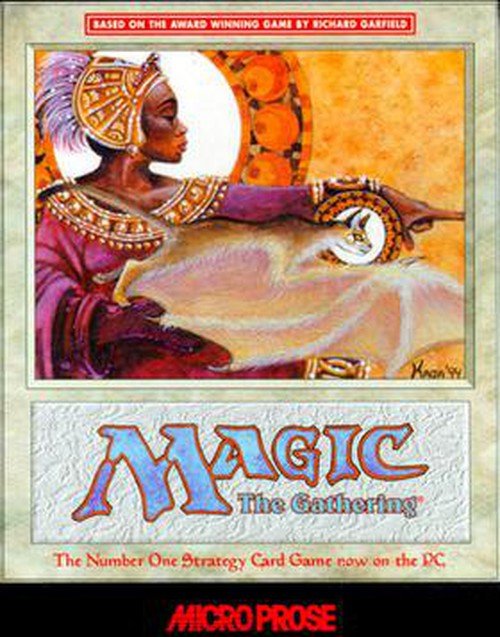
With the same name as the card game, this game was created, believe me, early 1997!
Developed by MicroProse and available for Windows computers, the game takes place on the plane of Shandalar (perhaps that's why it was informally called Magic: The Gathering - Shandalar). With several elements of the adventure and RPG genre, gold coins inventory, dungeons and random battles are present.
Ad
The player travels across the plane and fights enemies while progressing their current abilities and unlocking new ones. With each victory, you gain new cards and the main story revolves around defeating five mages, who represent the five existing colors of Magic.
The main objective is to prevent one of the colors from gaining too much power, ensuring the balance to defeat the planeswalker Arzakon, who has a deck with all 5 colors in the game.
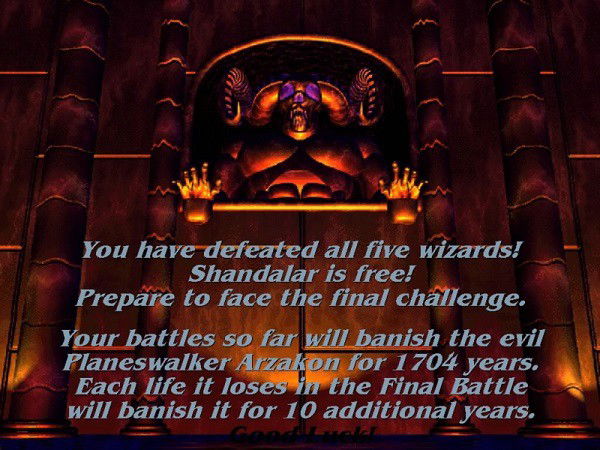
Shandalar has two published expansion packs:
Spells of the Ancients, released in late 1997, it includes engine update and improved AI interface and sealed deck tournament features. Added cards from the Alpha, Beta, Unlimited, Arabian Nights, Antiquities sets and promo cards. However, some cards could not be added, such as Chaos Orb and Shahrazad for having problematic effects in the video game.
The second expansion, Duels of the Planeswalkers was an optimization of the game as an updated version, available in early 1998. It included, in addition to the original game and all previous updates, 80 new cards from the Legends and The Dark sets.
Fun fact about this expansion: Anyone who owned the original game at the time could receive a discount to purchase the new expansion via mail!
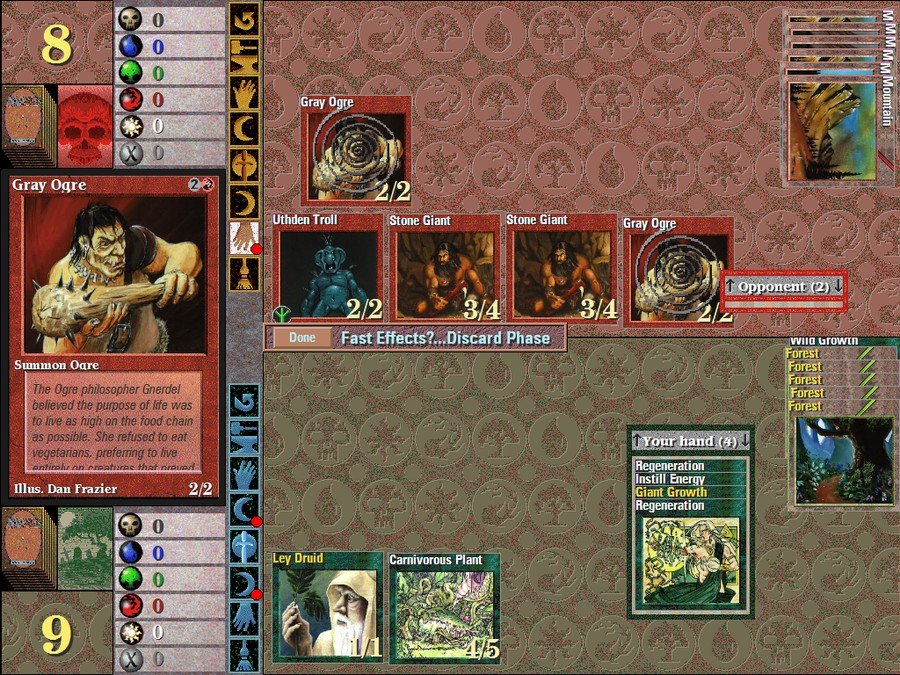
Originally, it features 1-player campaign mode and 1v1 duel-style multiplayer against artificial intelligence. A 1999 update to ManaLink added a multiplayer feature that allows players to interact via the Internet, modem, serial connection or LAN, which is very reminiscent of the physical card game table.
The game seems to have been well accepted and recognized, pleasing the public and being played until today by nostalgic fans, despite the somewhat old graphics. By the end of 1999, it had sold 400,000 units and, among the critics, the average rate is always above 75% favorable. *One last interesting development fact, this was the last game Sid Meier, esteemed game designer, worked on while at MicroProse. Sid has worked on other famous games like Civilization and Railroad Tycoon in its history.
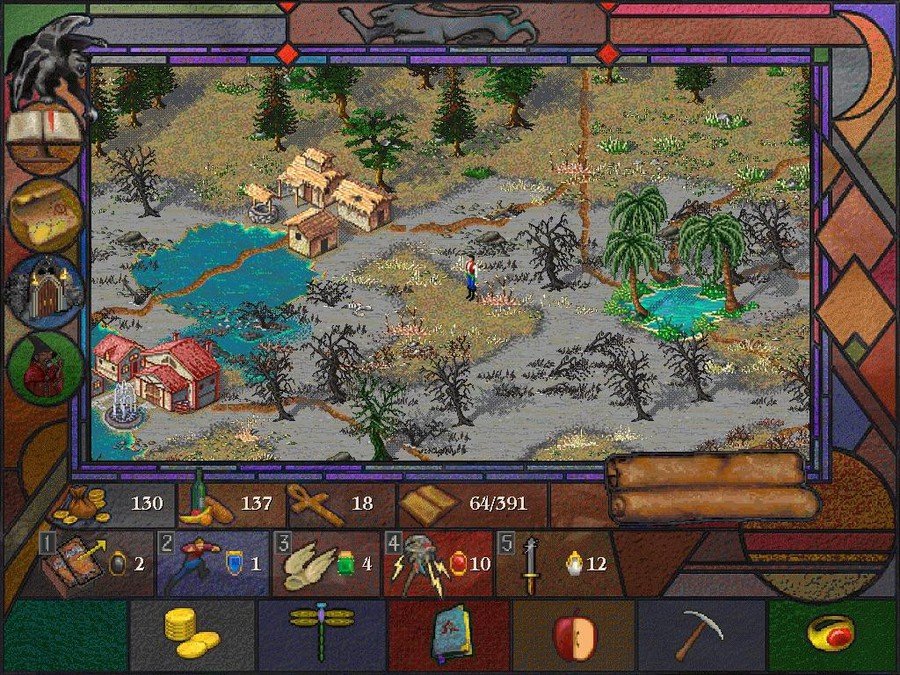
In case you are interested, there are videos showing how the game with Gameplay is. You can still find the software for purchase on some websites as well.
Magic: The Gathering: BattleMage
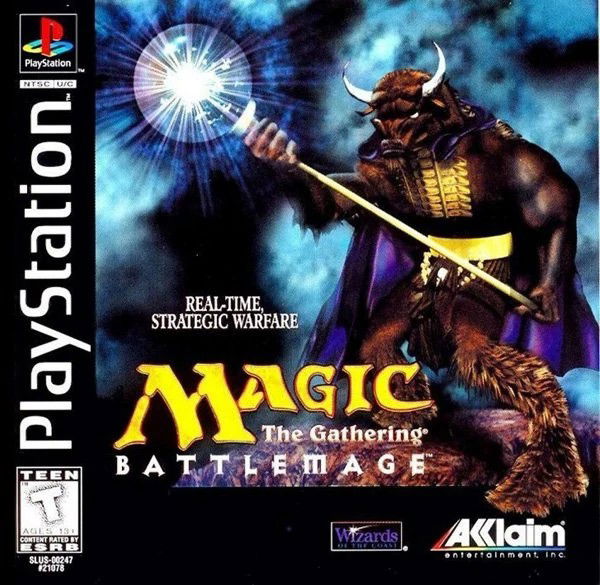
Despite the official date of this game being November 1996, it was made available in early 97 and therefore also deserves the title of firstborn, as one of the first Magic electronic games with Shandalar.
However, this one is a little less glamorous than the first one mentioned here, with some twists and very negative reviews. It was created as a real-time strategy game, developed by the famous Acclaim, available on Playstation and Windows platforms. It had development for Sega Saturn started, but the version was canceled in 1997, being recovered and made available in 2018 for Sega Saturn.
Ad
The story takes place on the continent of Corondor, on the plane of Dominaria, where Ravidel, a powerful planeswalker, goes mad with pain and betrayal and with that, he decides to annihilate all other planeswalkers to conquer his land. For this, Ravidel uses a device called Mox Beacon (being the union of Mox Ruby, Mox Jet and Mox Sapphire) to lure other planeswalkers to Corondor. Ravidel's main goal was for them to fight each other until they were weak enough to be killed.
Altogether there are 6 planeswalkers that appear in history: 3 are conquerors (Tevesh Szat, Doom of Fools, Leshrac - Nightwalker, Geyadrone Dihada) who seek to take the land for themselves, rich in mana. And 3 are Defenders (Jared Carthalion, True Heir, Cristina and Sandruu - The Minotaur Anaba) who seek to defend the people and their land from attack. Its plot revolves around this war of the planeswalkers, marked as one of the major events in the pre-booked history of the Magic: The Gathering universe and also referenced in the comic book Magic: The Gathering - The Shadow Mage.
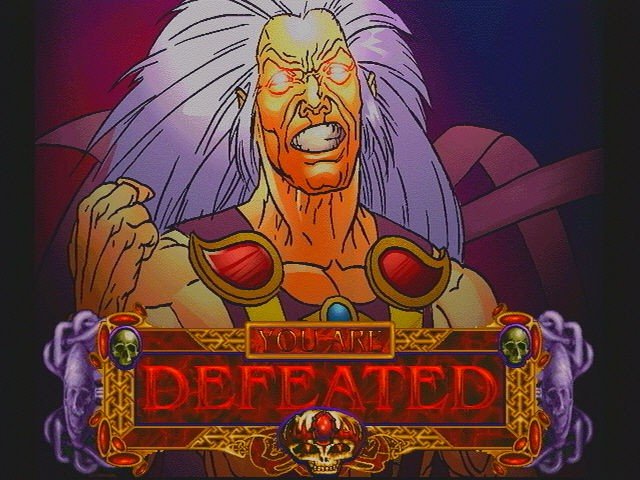
Magic: The Gathering - BattleMage contains two game modes:
The Duel, where you can assemble an army with creatures and spells, based on the card game to duel each other, against AI or against up to three other players via local network, modem or Internet if you are on the computer. For Playstation and Sega Saturn, there is also the possibility for two players to face each other in split screen, as it was famous in classic consoles in multiplayer games.
The second is the Campaign mode, a turn-based strategy game told as a story where you make choices and, depending on your answers, you progress or not in the conquest of territories and events unfold. Each time you start a new campaign, the choices, items and enemies will change randomly.
With beautiful graphics, card scenes and art for the time, the game had a terrible reception due to its unfair AI, difficult interface and unbalanced gameplay — since the duel mode takes place in real time, it is extremely difficult to make decisions and make choices. as fast as the computer. To clarify it for the reader, the player must command up to 6 creatures on the battlefield simultaneously, defend himself and cast spells (and here casting means choosing a card from a deck, paying mana in the correct amount and colors), all happening in an uninterrupted way. The computer's agility and precision ends up being far beyond what a human being with dozens of buttons to choose can do.
A patch has been released to fix the performance of some spells and try to improve the game's network capabilities, but nothing has been changed enough to significantly improve the experience and gameplay.

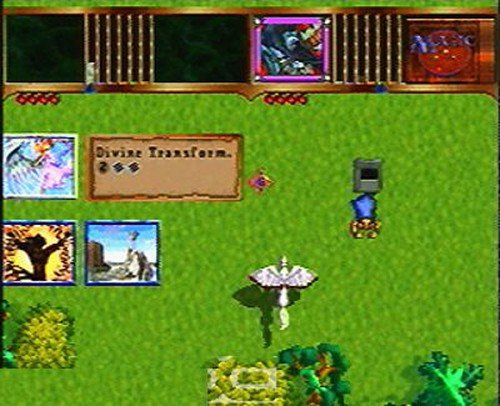
Ad
You should find the game to download on the internet if you want to try it out, or you can look for some videos on Youtube to draw your own conclusions:
Magic: The Gathering: Armageddon
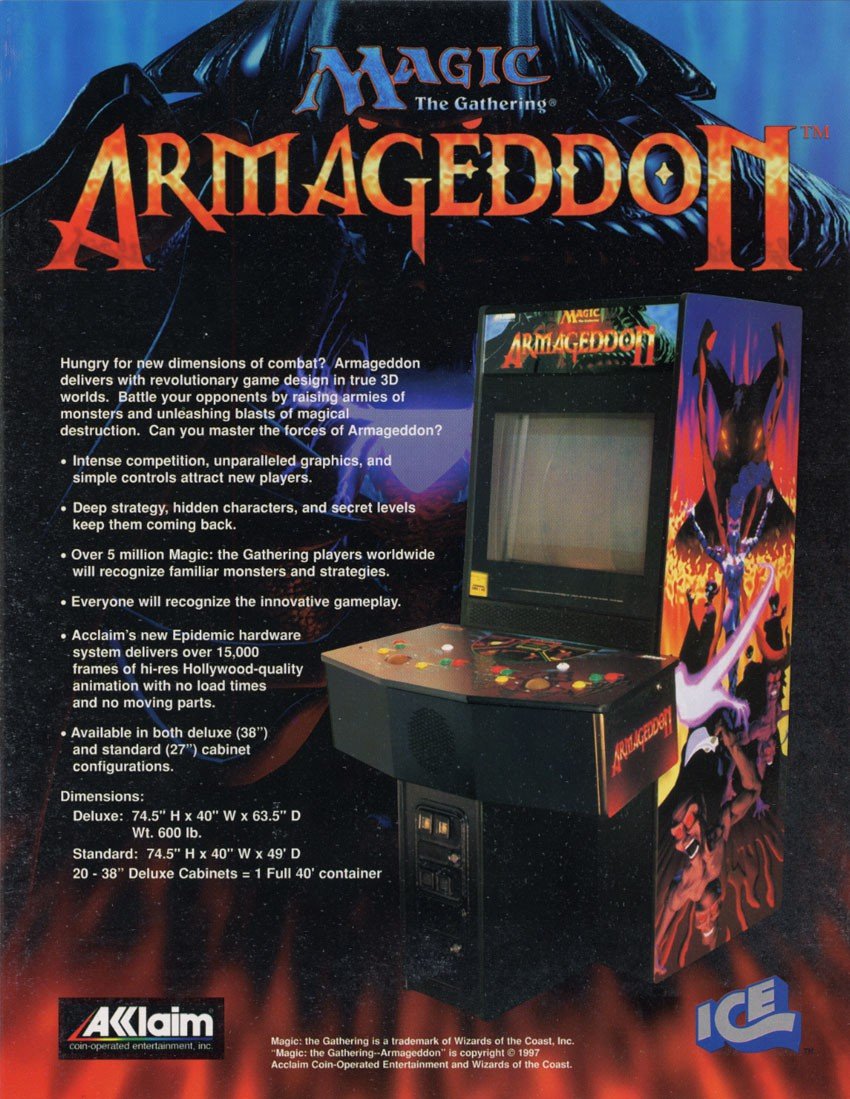
The rarest Magic video game on our list and also released in the year 1997 (it looks like they invested heavily this year, doesn't it?). MTG: Armageddon is an arcade-style game, possibly having only 5 machines made in its entire history as the division that took care of it from Acclaim, the developer, went bankrupt shortly after it was created — thus, it never made it to be mass-produced. It resembles Battlemage, where the gameplay is a cross between real-time combat and strategy.
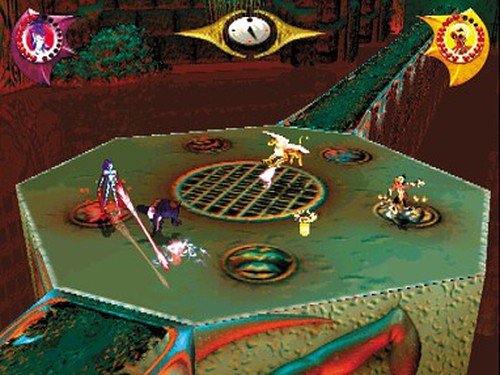
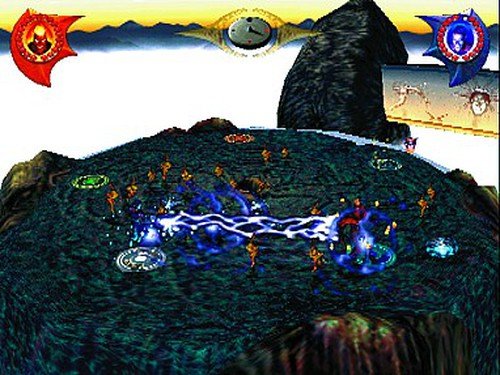
With no story, the game has only one mode where up to two human players face each other in an arena as a duel or human player versus AI. You must choose a character from five that symbolize the five colors of Magic: white mana has healing spells and summons soldiers/knights, blue mana has counter spells and conjures water creatures, black mana casts death spells and brings undead, red mana casts fire spells and mountain creatures, and green mana brings elves and forest spells into battle.
The objective is to defeat the opponent with your spells and creatures in a quick game. Its gameplay (although few players tested it) was considered difficult, as the "joystick" is in the form of a trackball added to other buttons. While you should pay attention to casting spells, you should also defend yourself and move around the setting.
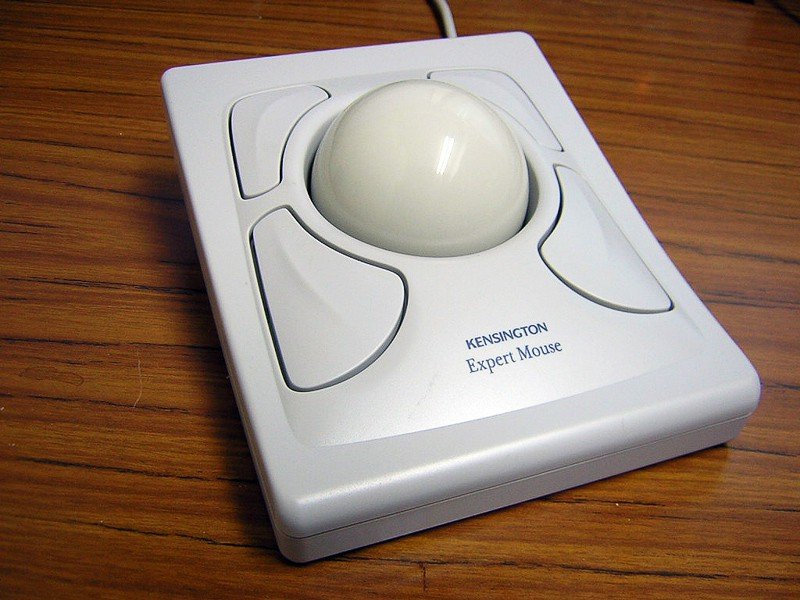
Overall, this is an unusual, quirky, and rare game, where even finding videos of people testing becomes difficult. I believe that the video that we have the most information about the game is this one below:
Magic: The Gathering (Sega)
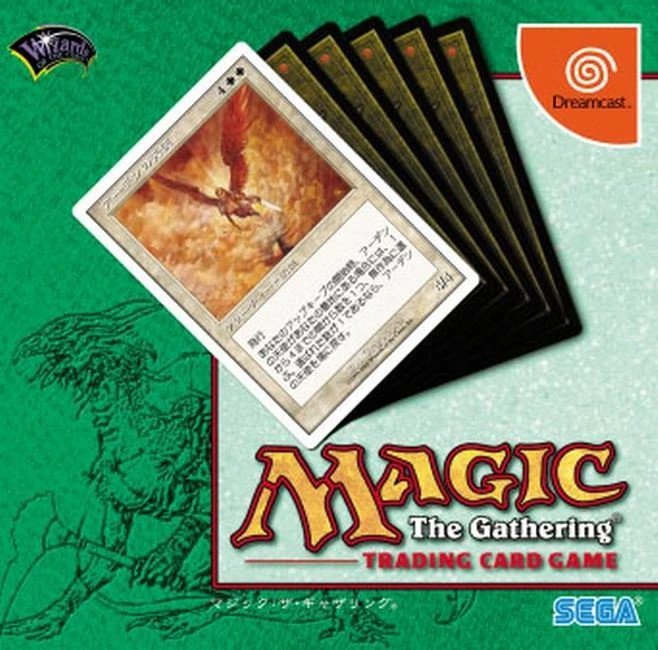
We jump to the year 2001 when Sega released Magic: The Gathering for the Dreamcast console, an electronic card game available only in Japan. The setting chosen as the game's environment is the fictional city of Magic Heart, on the outskirts of Murg, Carmat Island, Lydar Forest, Yeluk, Tornell, and The Balance Tower, each of the cities representing a basic land on which the opponent's deck is based, but none of these locations have any other connection with the card game's stories.
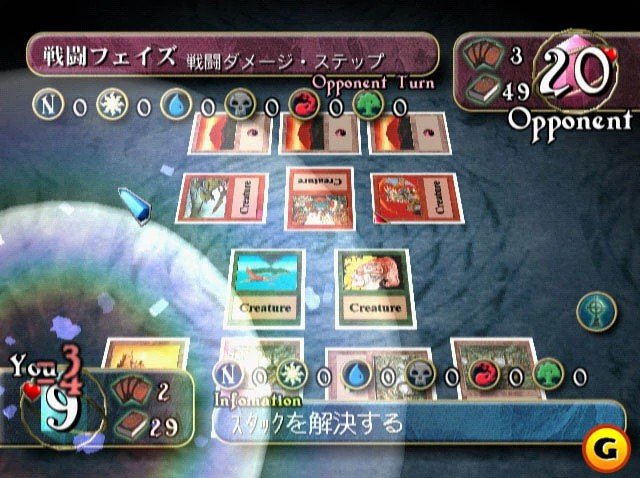
The game includes cards from the 6th edition, Alliances, Tempest, Stronghold and has only one game mode, where the player experiences a 3D adaptation of the table as we have in Magic Arena today, facing an AI opponent, following the original Magic: The Gathering rules.
Ad
Fun fact: In this game, 10 unique cards were created. It was the first time that the physical-identical simulator-style card game received cards just for it, as we currently see in Magic Arena's new Alchemy format:

As the game came out only in its Japanese version, it is difficult to have a wide dissemination and criticism, but the few I found are positive. The game looks like it would go ahead being more durable than just the sets present in it and with more dissemination like the English version because despite it being released in Japan, it is possible to see that there could be a plan to release the game in English, since several texts of the game are translated into both languages (JP x EN), in addition to the Sega Dreamcast not having been such a lasting console.
Another important fact that was about to happen might have influenced: There were bigger plans to come in 2002 for the Trading Card Game, as we will see below: Magic The Gathering Online would be close to being released!
Watch the gameplay below:
Magic: The Gathering Online (MTGO)
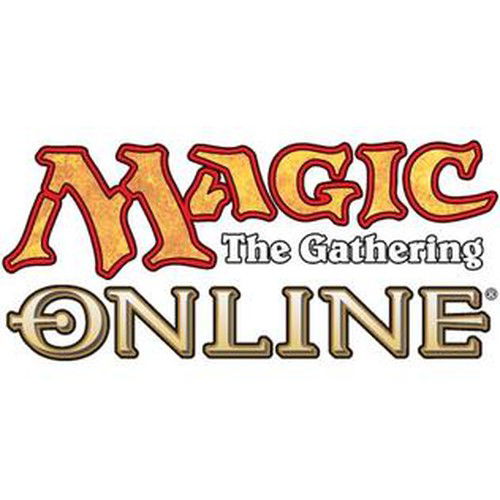
Born in 2002, developed by Leaping Lizard Software and maintained by Wizards of the Coast itself from its 2004 version 2.0 until recently, when it was announced that from 2022 (twenty years after its release) Daybreak Games will be taking care of MTGO's development.
Faithfully representing the table and areas of the card game and its stages of the game, along with the trade/sale system and having all the official formats, MTGO has today numerous players and, outside the Standard or Historic formats, is the platform where most professional players or those looking for some financial return play. In February 2007, Magic Online already had more than 300,000 registered accounts and today, after the beginning of the pandemic, it shares the official electronic game scenario with Magic Arena — both as physical game simulators.
Talking about the “game modes” present in MTGO would be a separate article. As already mentioned, it has all the official built formats: Legacy, Vintage, Commander, Brawl, Standard, Pioneer, Modern and Pauper, in addition to its variations as Commander or Duel Commander. We also have the part of sealed formats, cubes, Momir and even an area that allows us to several other specific formats created by the community in a part that can be called "do it yourself", letting you define the rules (as far as possible).
Regarding the sets of cards available, unlike Magic Arena and as it has all formats, including the eternal ones, MTGO has practically all the cards released and legal in the game until today. The first set available at launch was Invasion (released in physical cards in the 2000s). After that, with each edition released in the physical game, three or four weeks later the complete collection was made available on MTGO and this continued during its first 10 years of life. More and more players asked for the difference between electronic and physical to be smaller because in the electronic environment, testing decks and strategies is much faster, being an excellent tool. In just a few minutes, you have the chance to play several games without leaving your seat, with decks and opponents from different parts of the world.
Ad
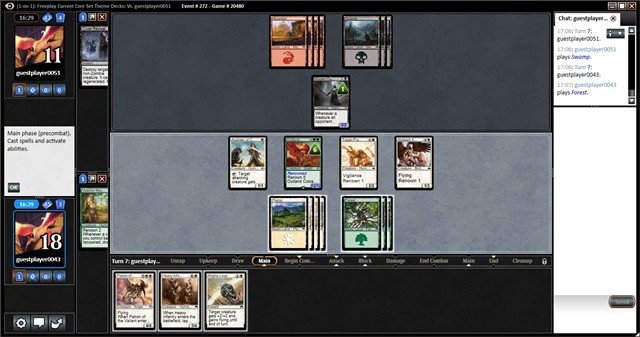
It was from 2005, with the inclusion of part of the Mirage set (original from 1996) that Wizards began to bring the old cards of the game to MTGO, with Masters editions. The first was in 2007, followed by Master Editions II, III, IV, being released consecutively in 2008, 2009 and 2011. After the fourth Master edition, only about 800 cards were missing from the Mirage and Portal blocks. For the most part, cards that ended up being outdated and that don't affect the gameplay — in addition, older cards like the power-nines were released in sets like Vintage Masters, filling the gap they needed until 2014, and with that today, all cards from Mirage onwards are online, and only a few unimportant Portal cards were not created in the game. Currently, every new set is released in parallel on MTGO (sometimes in the pre-release week).
On the internet there are several streams, games and tutorials on YouTube to find in different languages and to play. Just download at official website, the game is free to test, and whenever you want, you can pay 5 dollars to activate the account and release all functionality such as exchanges and sales between accounts. The initial account provides 2 uncommon cards of all cards present in standard format upon activation and 4 of all common cards in standard format upon activation, in addition to points for playing events, avatars and lands.
The economy of MTGO is quite different from the physical Magic and the exchange currency is called Ticket, or TIX, which is equivalent to 1 US dollar. This Ticket is used to make purchases in bots (which are online stores) and also used to enter events.
Since its release, Magic Online has received positive reviews. Although its interface is not that attractive, the features are, among all the Magic games released to date, the ones that come closest to the full experience of the original Trading Card Game.
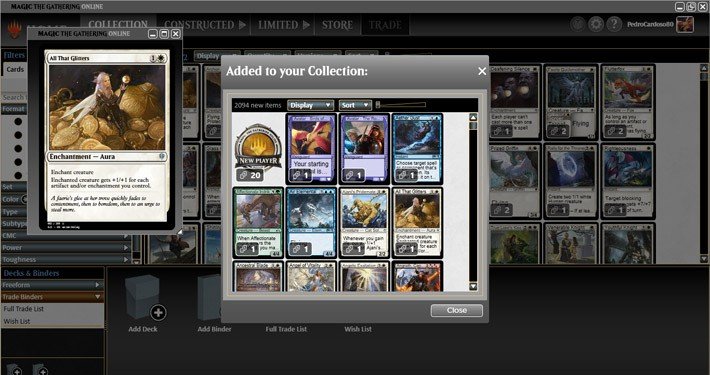
Parallel curiosity between electronic and physical
In MTGO there is something called Redemption. Wizard allows collectors who assemble a complete collection of a set (1 copy of each card differentiated between foils, normal and alternate versions) to exchange it for a collection in the same physical medium, for a fee of 25 dollars (plus fees and freight). Each set has a validity of 4 years after its release so that it can be exchanged. The redemption policy is one-way, online to physical only.
Magic: The Gathering – Battlegrounds
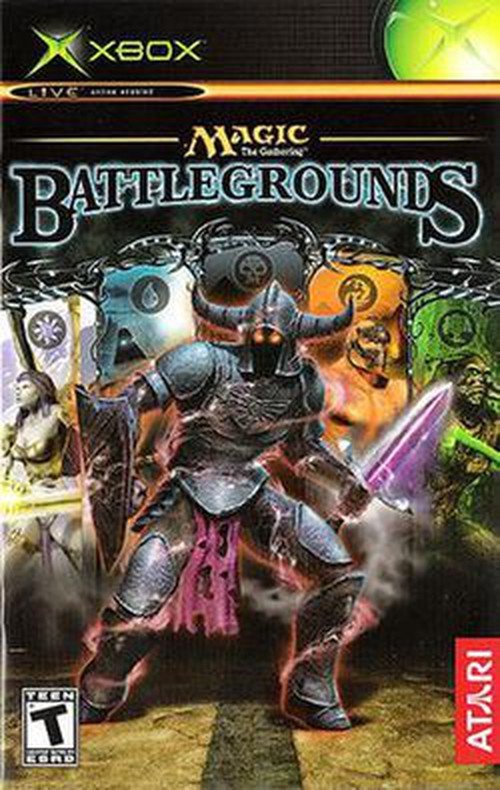
Continuing our timeline, we reach the year 2003 with a release developed by Secret Level and published by Atari for PC and Xbox platforms. Magic: The Gathering – Battlegrounds promised to deliver a different experience from the previous ones, it is very different from the card game, perhaps getting closer to the arcade game seen so far. This real-time strategy game is based on creating a character that summons monsters and spells to defeat enemy mages. The spells are divided between the five colors of mana, with their strengths and weaknesses each, as in color pie. With each victory, the player progresses his skills and learns new spells.
Ad
The game doesn't seem to resemble anything from the card game, were it not for the names of spells and creatures, with real-time combat, were it not for a pre-edited deck that each player uses and edits before battle. Without a story, the objective of the game is basically to reduce the opponent's health to zero.
Battleground has several game modes. Quest mode takes you through the strategy of each card. Practice Mode is where you can adjust your deck against basic computer AI and two player duel (you against the computer or another player).
In duel mode you have the option of one to three games to win the match where you play with someone else on your console (or via XBox Live) that last up to 10 minutes, and if you don't finish, the player with the most life is crowned champion. At the top of the screen you have the life points like in Mortal Kombat or other fighting games, and you can move your character around the arena as the battle unfolds. These combat arenas refer to the Magic: The Gathering multiverse, but are just aesthetic, not interfering with matches.
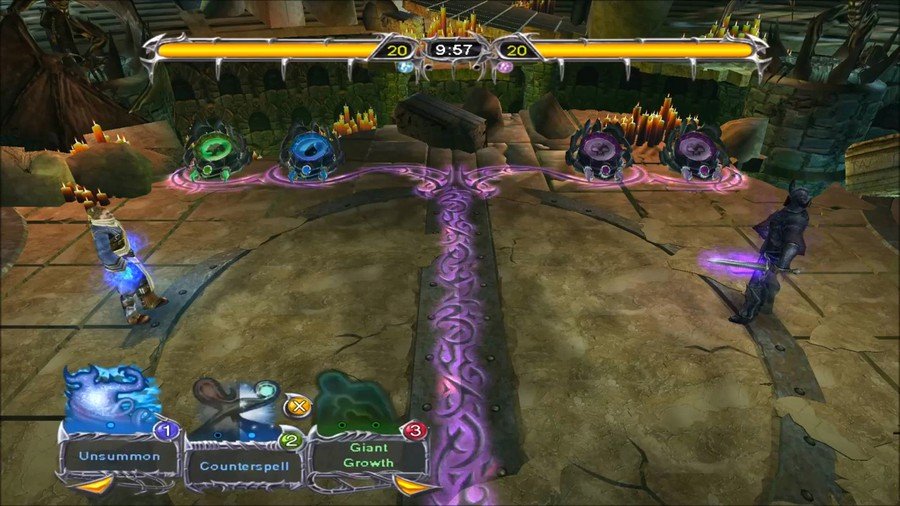
Fun fact: Despite the structure and appearance far from the card game, Wizards has released a article at the time talking about and explaining up to 3 decklists with strategy, although the cards suffered adjustment to balance the costs:
Elvish Beeefcake
Speed Gorilla
Monoblue Control
Promo video
The game seems to have been well accepted, with reviews between 7 and 8, good gameplay and good graphics for the era. pool. It appears that the real-time game issue has been resolved by making controls easier with a joystick, and the AI issue resolved with the increasingly present entry of multiplayer and online games.
Magic: The Gathering – Tactics
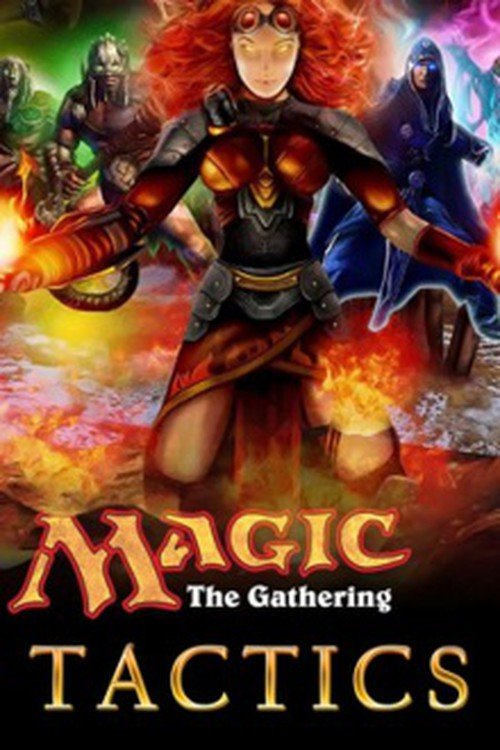
Turn-based strategy game, MTG Tactics was an online game developed by Sony Online Entertainment about the Trading Card Game universe. Announced in 2008 and only released in 2011 for PC and in 2012 on Steam, it possibly had its Playstation 3 version canceled as it was announced and never reached the platform and never will, since in 2014 the game was canceled before its release.
At the beginning, the player must choose one of the five colors that make up the color pie and an avatar to represent it. Despite this, new players receive preconstructed decks of all colors, and the cards in these decks cannot be exchanged. New cards can be obtained in-game through trading, at an auction house, purchase or rewards for a completed quest.
The object of the game is to defeat the opposing planeswalker using your library. But unlike the card game, you don't tap lands to use mana. Each turn, each player has a mana pool available. Your avatar can learn talents and improve throughout the game, and battles are map-like, reminiscent of a turn-based tabletop miniatures RPG.
Ad
At the end of 2011, a new set of figures was released along with new game mechanics, but some game content is unlocked only by purchasing virtual coins used in Sony games.
As mentioned, the game's strength lies in the tactical online combats between players, but it also provides a story mode.
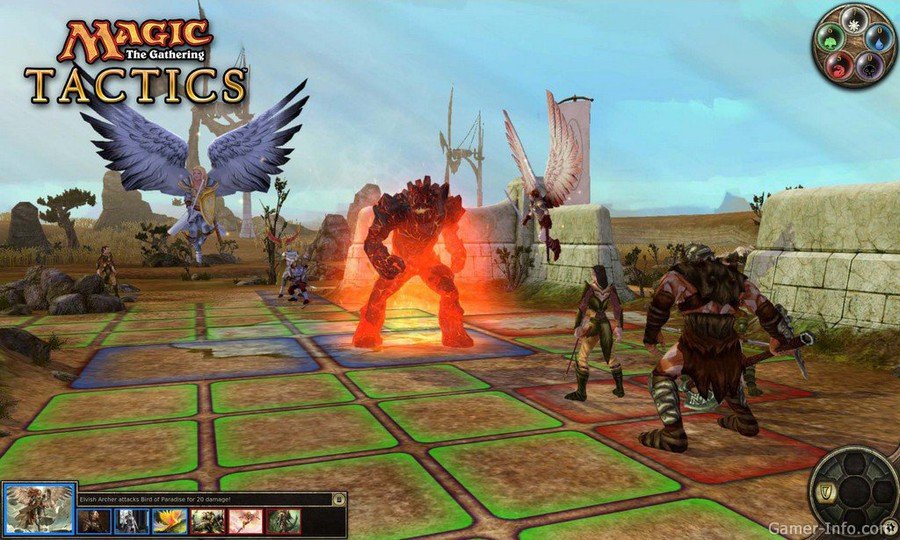
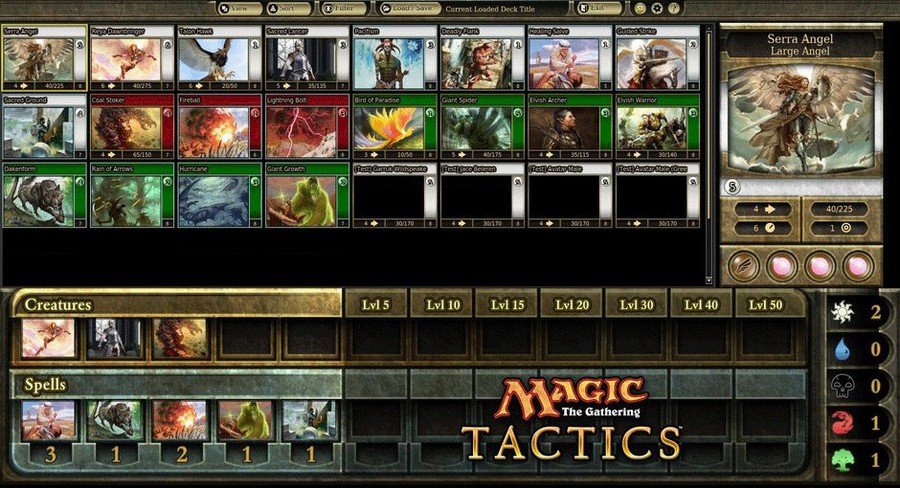
Receiving good reviews, such as 9, the game has fluid movements and combats in a thoughtful and strategic speed, seeming to have pleased fans of this style of game, remembering Final Fantasy and World of Warcraft.
The scenarios were very well done, and they influence certain creatures that, outside their habitat, cannot exert their full power. The graphics are beautiful, and the soundtrack doesn't disappoint, however, as the game ended in 2014, we only have videos showing what it was like. In some cases, you can try to find to download and test the story mode or offline mode.
Conclusion
Here we take a break in our history, closing the first part in the first almost 12 years of electronic franchises from 1997 to 2008. We have seen that, just like the Card Game that had its beginnings in comics and story novels with well-elaborated plots, throughout time, it moved on to other different aspects, some possible tests such as the case of arcades and real-time games.
From this first part, we can get good stories and memories. We have MTGO active to this day as a simulator and for the next part of the article, we will see a new cycle that will start in 2009, resulting in the current days with Magic Arena!
Don't miss part two, which will be released soon, and if you have anything to tell us, let us know in the comments. Until the next time!
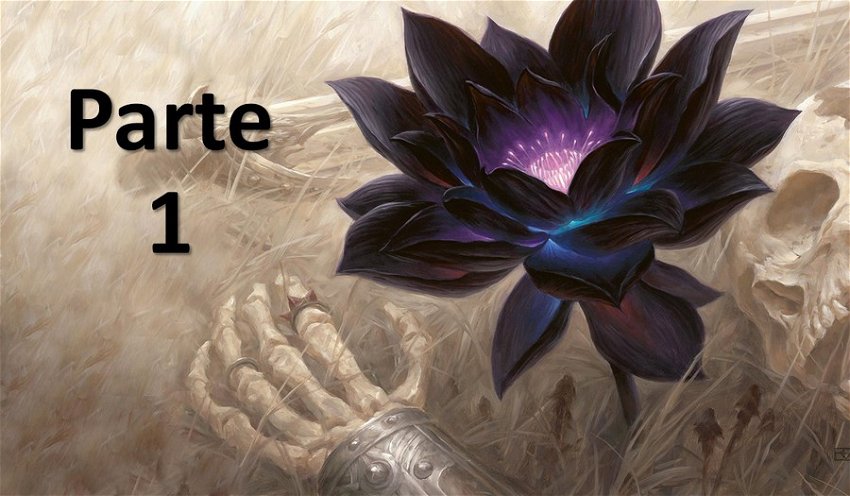



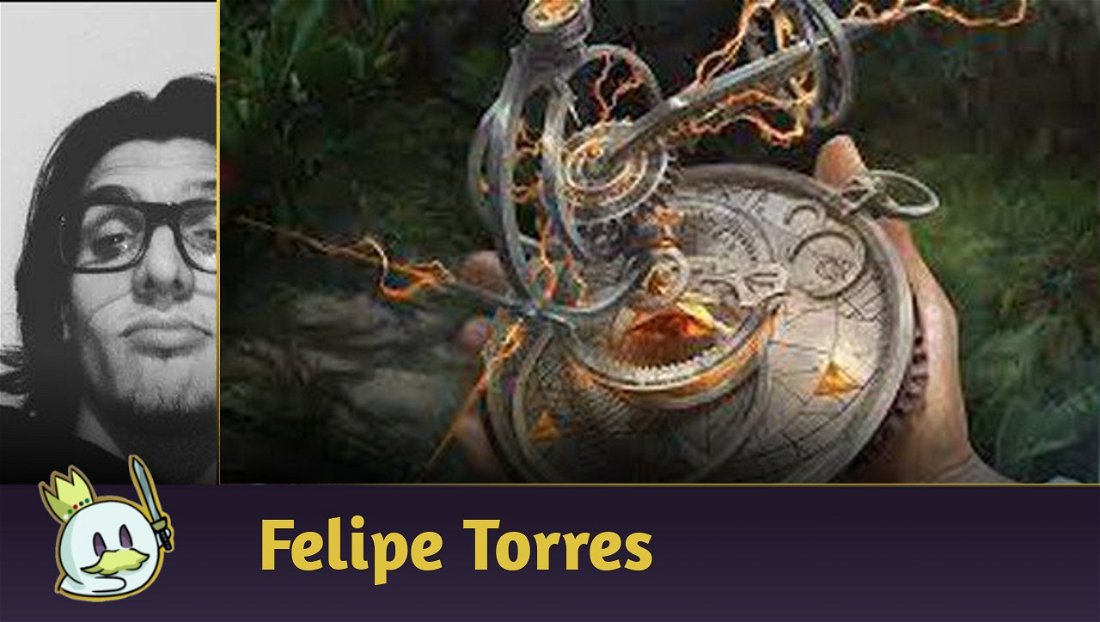
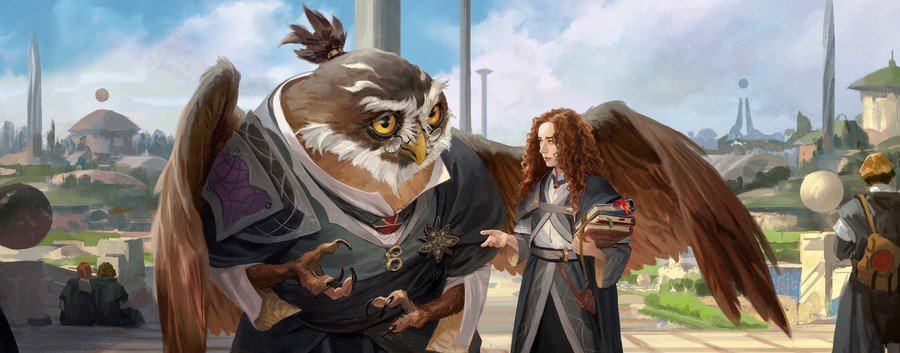



— Comentarios0
Se el primero en comentar